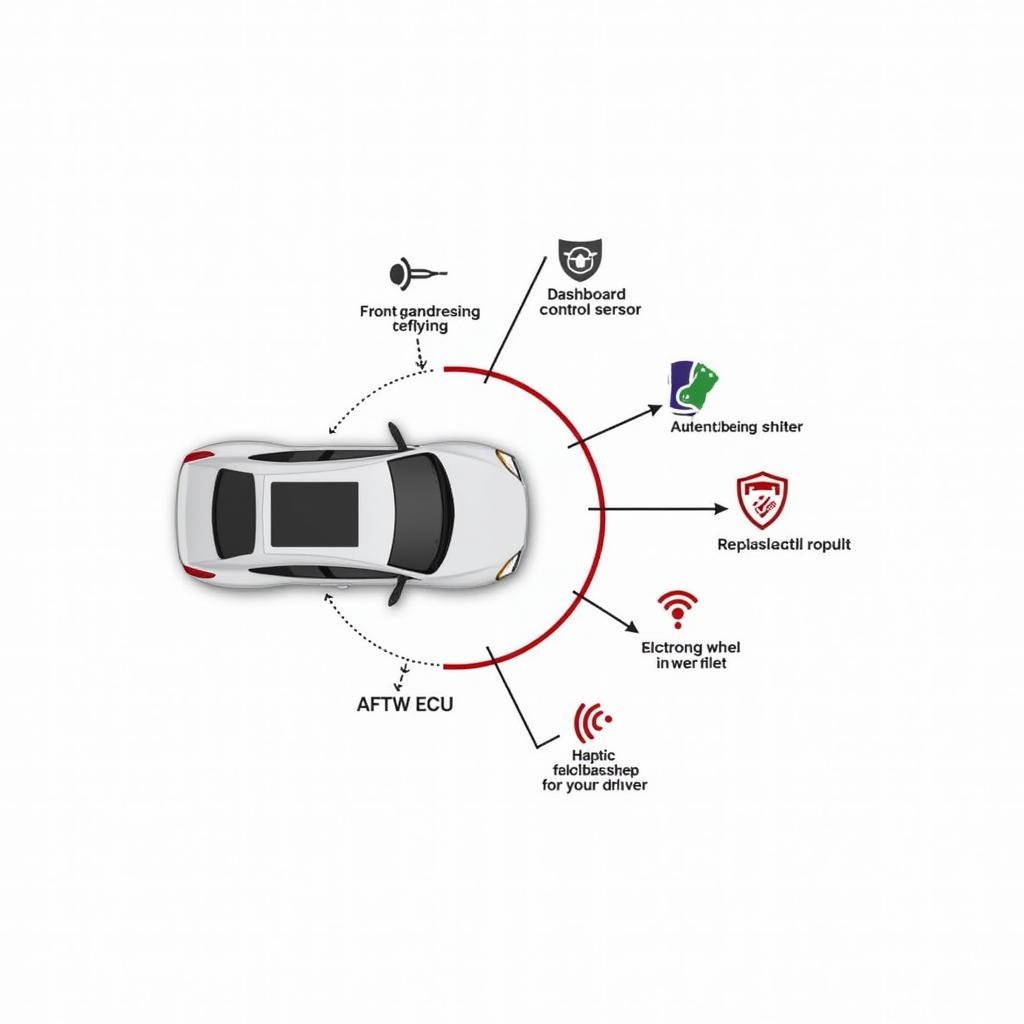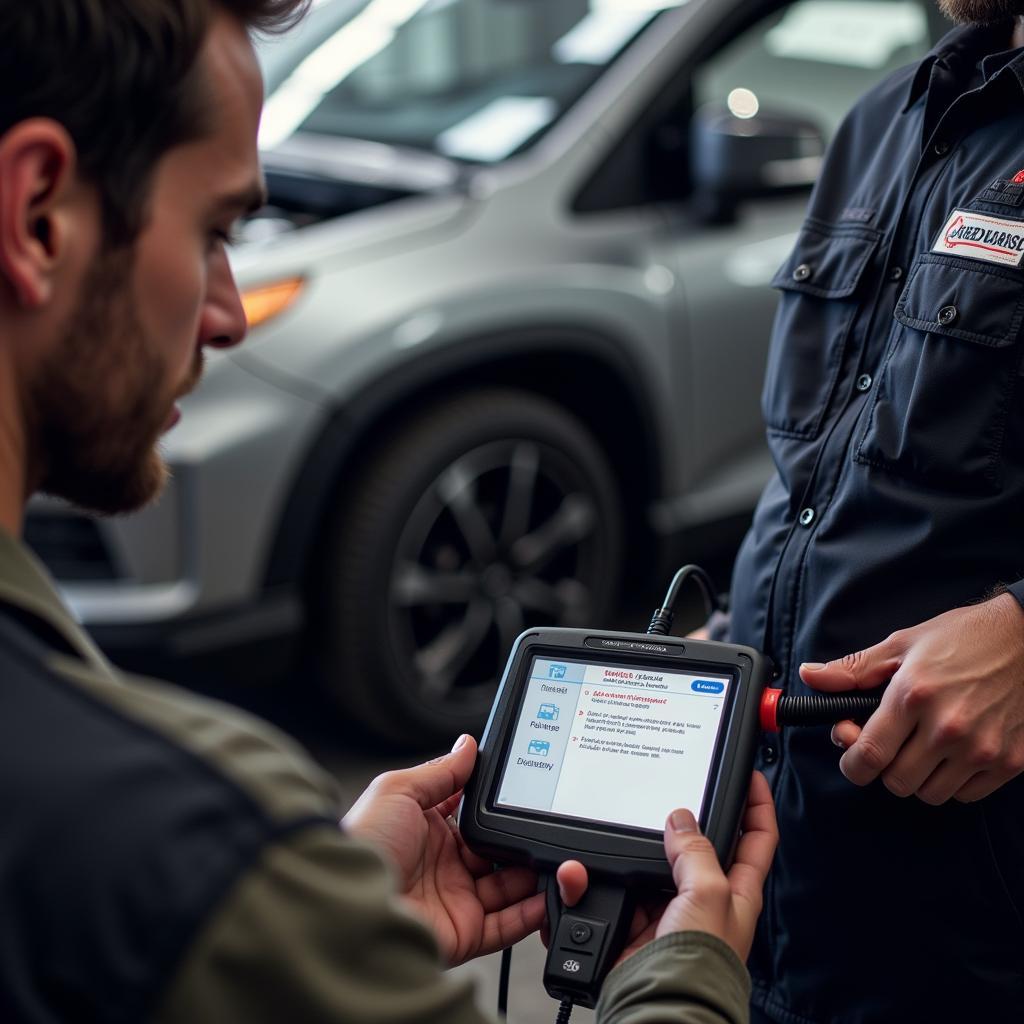The “collision warning with full auto brake” message appearing on your dashboard can be unsettling. This sophisticated safety feature, designed to prevent or mitigate collisions, relies on a complex network of sensors and software. While this system generally operates seamlessly, occasional glitches or malfunctions can occur, prompting warning messages and potentially compromising your safety.
This comprehensive guide delves into the intricacies of collision warning systems with full auto brake, exploring their functionality, common issues, and troubleshooting tips, empowering you to address this critical aspect of your vehicle’s safety.
How Collision Warning with Full Auto Brake Works
This system acts as your co-pilot, constantly scanning the road ahead for potential collisions. Using radar, cameras, or lasers, the system calculates the distance and speed of vehicles in your path. If it detects an impending collision, it issues an audible, visual, or haptic warning, prompting the driver to take corrective action. If the driver fails to react in time, the full auto brake system engages automatically, applying the brakes to either prevent the collision or minimize its severity.
 Collision Warning System Components
Collision Warning System Components
Common Causes of Collision Warning Malfunctions
Understanding the potential culprits behind these malfunctions is crucial for effective troubleshooting:
- Sensor Obstructions: Dirt, debris, snow, or ice covering the sensors can disrupt their ability to accurately detect obstacles.
- Environmental Factors: Extreme weather conditions such as heavy rain, fog, or bright sunlight can interfere with sensor operation.
- Software Glitches: As with any software-dependent system, occasional glitches or bugs can disrupt its functionality.
- Electrical Issues: Faulty wiring, loose connections, or a weak battery can impair the system’s performance.
- Component Failure: Damage to the sensors, control unit, or braking system can lead to malfunctions.
Troubleshooting Collision Warning with Full Auto Brake Issues
While consulting a qualified technician is always recommended for persistent or complex issues, here are some initial steps you can take:
- Check for Obstructions: Carefully inspect all sensors (usually located on the front grille, windshield, or rear bumper) for any dirt, debris, or obstructions. Gently clean them with a soft cloth.
- Restart Your Vehicle: Sometimes, a simple system reboot can resolve temporary software glitches. Turn off your engine, wait a few minutes, and then restart.
- Consult Your Owner’s Manual: Your vehicle’s manual often provides specific instructions and troubleshooting tips for its safety features.
- Check Your Battery: Ensure your battery is fully charged, as a weak battery can affect the system’s performance.
 Cleaning Car Sensors
Cleaning Car Sensors
When to Seek Professional Help
If the warning persists despite these initial steps, it’s crucial to seek professional assistance from a qualified automotive technician specializing in collision warning with full auto brake on volvo xc60 2017, or your specific vehicle model. They have the expertise, diagnostic tools, and access to software updates to pinpoint and address the underlying issue effectively.
Importance of Regular Maintenance
Regular maintenance plays a vital role in ensuring the optimal performance and reliability of your vehicle’s safety systems, including the collision warning and full auto brake.
“Regularly scheduled maintenance, including sensor calibration and software updates, is paramount for maintaining the integrity and reliability of advanced safety systems.” – John Smith, Senior Automotive Engineer
FAQs about Collision Warning with Full Auto Brake Systems
1. Can I temporarily disable the collision warning system?
Most vehicles allow you to adjust the sensitivity of the system or temporarily disable certain features through the infotainment settings. However, it’s generally not recommended to completely disable such a critical safety feature.
2. Will the full auto brake stop for pedestrians?
Advanced collision warning systems with pedestrian detection capability can apply the brakes if a pedestrian is detected in the vehicle’s path. However, system limitations and environmental factors can affect performance, so relying solely on this feature is not advisable.
3. Can aftermarket accessories interfere with the system?
Yes, certain aftermarket accessories, especially those installed near the sensors, can potentially interfere with the system’s operation. Consult with a qualified technician before installing any aftermarket accessories.
 Car Diagnostic Scan
Car Diagnostic Scan
Conclusion
The collision warning system with full auto brake is a testament to the advancements in automotive safety technology. Understanding its functionality, potential issues, and troubleshooting tips empowers you to ensure this crucial system remains operational, providing an extra layer of safety on the road. Remember, while these systems are incredibly valuable, they should not replace attentive driving and responsible vehicle operation. For persistent issues or complex diagnoses, always consult with a qualified automotive technician specializing in collision warning full auto brake systems for expert assistance.

